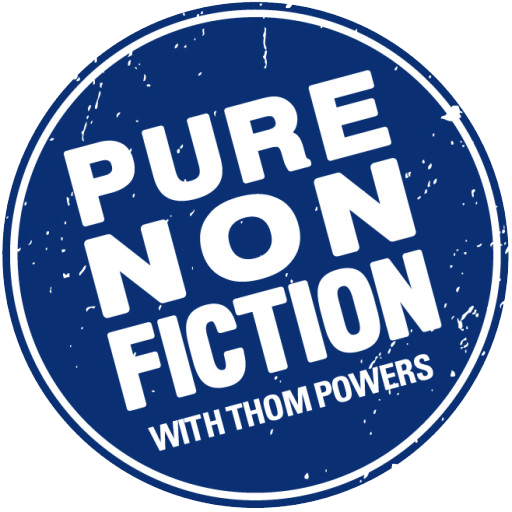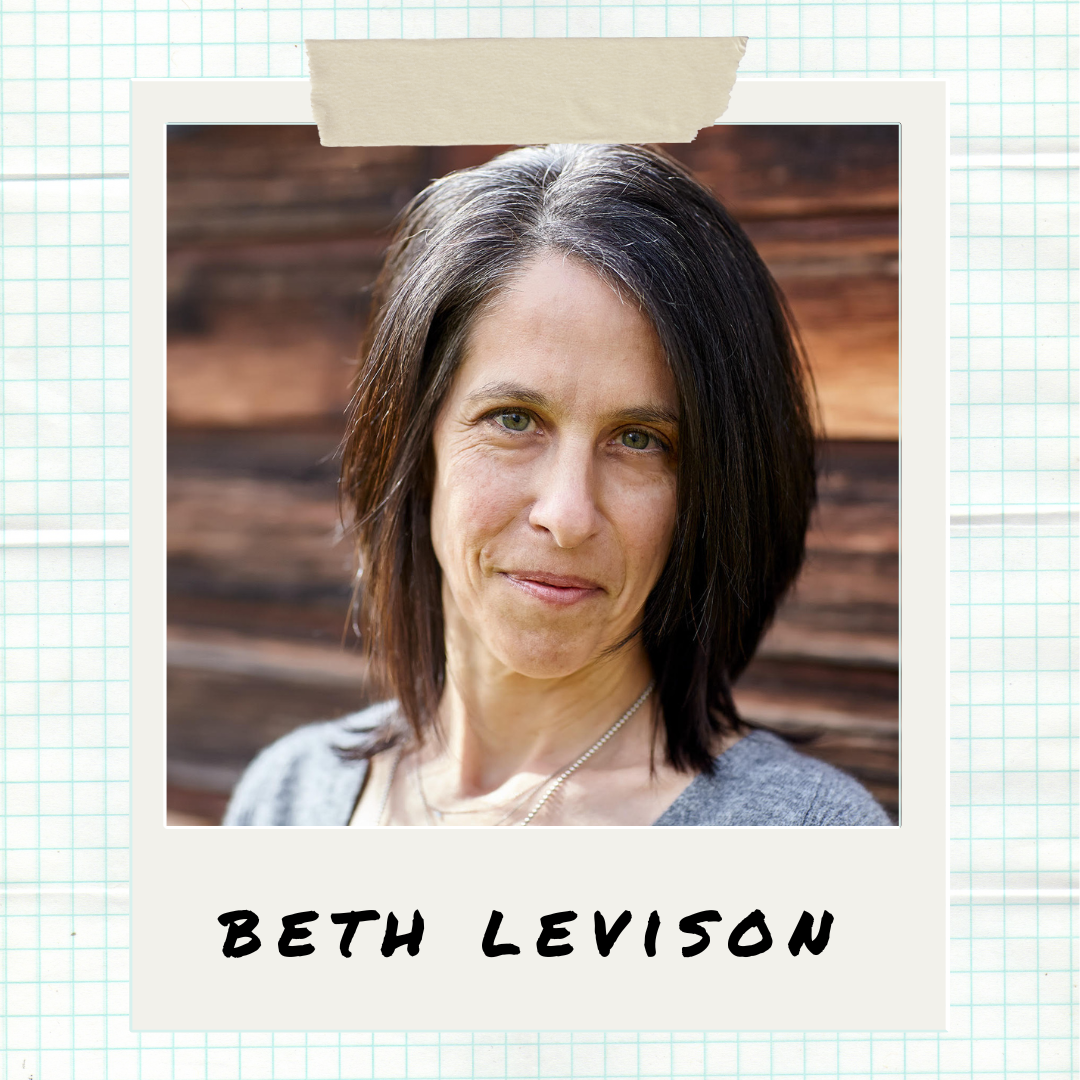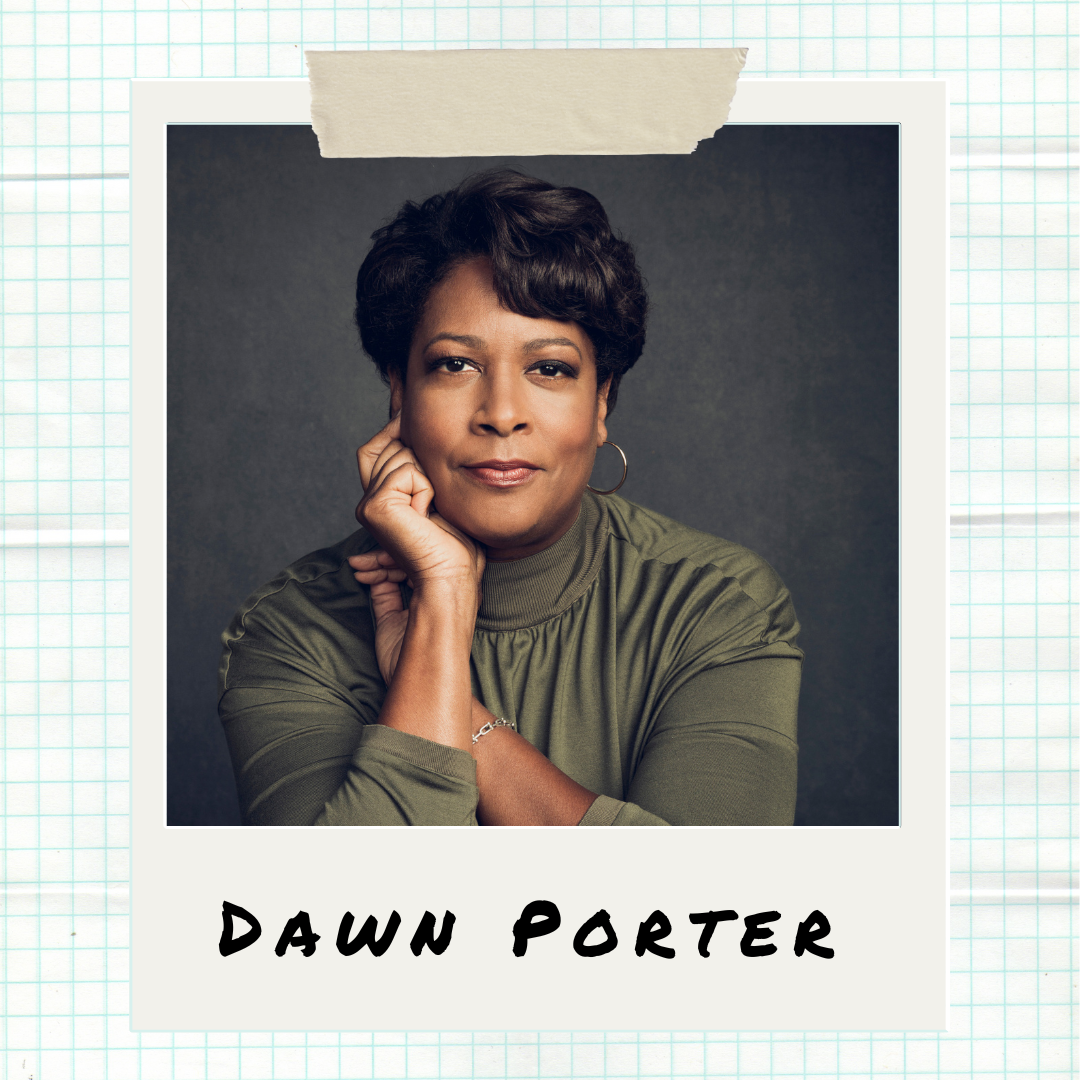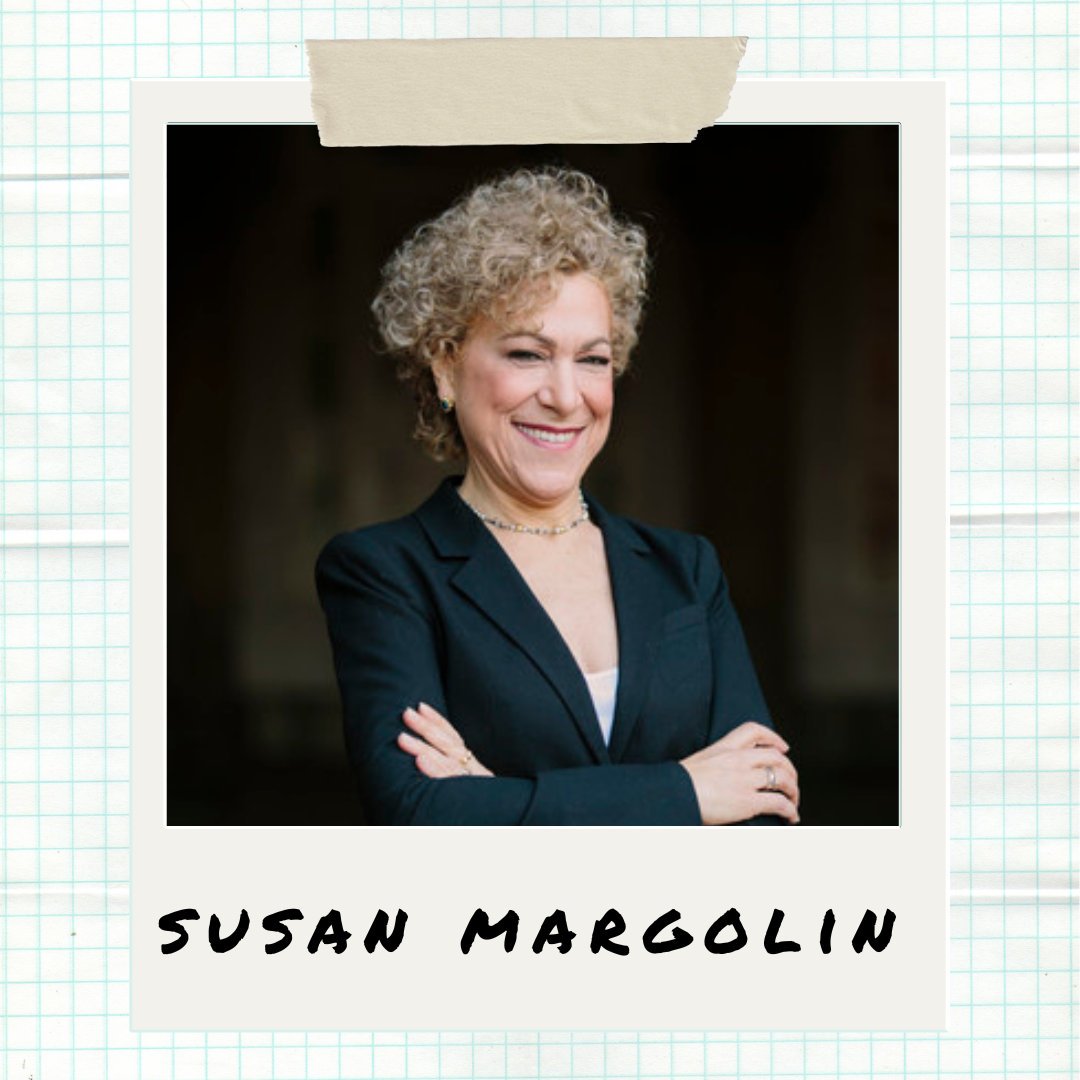Documentary Producers on What’s Needed Now
Welcome to the debut of Producer’s Notebook, a newsletter devoted to sharing perspectives on documentary financing, production and distribution. A recent Indiewire article captured current worries: “Ballooning budgets, fewer buyers, and tighter mandates for commercial movies has meant hard times for more challenging original stories.”
We reached out to producers and industry figures to get their take. Rather than recycle familiar fears, we asked:
What do you see as signs of hope, resistance, or surprising success?
What do you think is needed for this moment?
We’re sharing the perspectives of eight respondents below with more to come next week. Their testimonies convey deep emotions and provocative ideas.
Beth Levison and Jameka Autry speak to the power of collective action. Julia Bacha notes that for most filmmakers of color, the “golden age” of documentaries is yet to come. Matt Wolf cautions against panic. Dawn Porter sees potential for philanthropy and PBS to step up. Dorota Lech reflects on the recent Hot Docs Forum. Diane Quon yearns to convene change makers across the field to work together. And Susan Margolin remembers the example of when independent filmmakers rallied to create ITVS.
If you’re a producer with a unique view on these questions, we invite you to email your thoughts in 300 words or less to listen@purenonfiction.net. We’ll be sharing further responses in the coming weeks.
BETH LEVISON, co-founder Documentary Producer’s Alliance (DPA)
Producer:
The Martha Mitchell Effect
Storm Lake
“We’re defining our wants and needs, in many cases for the first time, and this feels exciting.”
I think a sign of hope is the resistance - that we have filmmakers coming together and collectively organizing to create change. I can’t think of a time when there have been so many artist alliances and networks: A-DOC, ADE, BIPOC Doc Editors, Brown Girls Doc Mafia, the DPA, FWD-Doc and others. We’re not only working in our own silos, but across them.
Is this resulting in meaningful, structural change and all the things we want to see? Not yet. But, we’re defining our wants and needs, in many cases for the first time, and this feels exciting. Look what’s happening on the fiction side – there’s a strike at work, writers demanding that their work is valued differently. I think that doc makers are getting ready for their own kind of demands for change.
Another sign of hope is the strength of the work that’s being created – there’s a level of artistry, experimentation, and expression that’s exciting and changing the form – in spite of the pressures we’re all under. Take, for example, the films nominated for Oscars this year – All That Breathes, Fire of Love, House of Splinters, Navalny, All the Beauty and the Bloodshed. Those are five amazing films, not one at all like the other! The work only continues to get stronger, more daring, more cinematic. I teach in a film program, and the level of inventiveness I see in young people just blows my mind.
Finally, we have so many new voices in the industry. The work of artist residencies, labs and other support mechanisms designed to cultivate talent from underrepresented communities is paying off, challenging not only what stories are told, but how. The field has new gate keepers and players and the rules of the game are shifting. I think we’re in process and not at our destination.
I think we need to come together in this moment. We can’t work from a place of self-interest, but as a collective. We have to continue to find common ground and work to understand each other: directors and producers; producers and editors; filmmakers and film festival programmers; the list goes on. We have to listen, even when it’s hard, and be willing to do things differently.
With this in mind, we can’t moan and groan. We have to find the courage to come together and stand up for what we need. I look at the writers strike and ask myself, “What would something like this look like for the documentary field? What do we need to do to create the change we want to see?” I don’t know what’s coming, but something is. There’s just too much organizing happening for it not to result in structural change.
And while the ground shifts under our feet, we need the funders to stick with us. They can’t flee. Once they exit the space, we’re done for. Strong filmmakers almost always deliver on their promise and we need to invest in the long game – together.
Finally, I don’t know what it is, but we need to build new distribution models – platforms? – for independent documentary film. We’re a bunch of bucking broncos telling all kinds of stories, and we’re getting herded into narrow pens. With all of this talent and filmmakers' willingness to take risks, we need new opportunities for the range and richness of our films to be seen and discoverable by audiences. We need to create the time and space (and find the support) to imagine, together, what that could be; we need a summit to redesign our future.
Producer:
Charm Circle
Through the Night
“First and foremost, we need a union.”
I’ll be honest and say that it’s hard to find a lot to be hopeful about in this moment. People in almost every corner of media and journalism are living in a time of new age censorship. Documentarians who dare to make a film that ventures outside of true crime or celebrity culture can’t find a home for their film. Suddenly anything deemed “social issue” is also “risky” or “potentially polarizing”.
So we are caught in a place of corporations saying that they want diversity – both racially and geographically – however (possibly ironically), most POC filmmakers or filmmakers from the south are likely going to be drawn to a story that is categorically ostracized.
First and foremost, we need a union.
Second, we need to expand the Academy to recognize more than just Best Documentary Feature and Best Documentary Short. It is driving talented people away from their craft of editing, cinematography, and producing in order to aggrandize the Director role. So many festivals and workshops only recognize the director and write off everyone else.
Third, we need to understand that the economics behind the documentary field have long kept away diverse talent. Lately I have seen so many budget conversations stall when reviewing the pay for directors and producers. Until we acknowledge that asking people to work 2-3 years (in a time of rising inflation) for a flat fee of $75-85k doesn’t work. Could any of the executives asking for these numbers afford to live on $25-35k/year?
Finally, the rise of production companies and their respective overheads have drastically hurt the industry. There are fewer distributors and fewer dollars which means that production companies and talent are first in line on the industry waterfall, leaving little more than a trickle for those who are breaking into the industry or on the margins.
Creative Director: Just Vision
Producer:
Boycott
Budrus
“For the vast majority of filmmakers of color...the golden age of documentary has yet to come.”
You can’t mourn something you’ve never had.
Much ink has been spilled on how a promising “golden age of documentary” has turned into a troubling “corporate-age.” The writings about these shifts often sound nostalgic, longing to return to a time when independent documentary filmmakers thrived. What’s regularly missing from these accounts is how for the vast majority of filmmakers of color–particularly female filmmakers of color and especially those working on political or social justice-oriented documentaries – very little has changed. From their perspectives, the golden age of documentary has yet to come.
Just Vision, a non-profit focused on independent storytelling related to Israel and Palestine in which I serve as Creative Director, presents an alternative. We recognize that tenacious storytelling can hold the powerful to account only when filmmakers have creative control over their projects. It also requires a sustainable infrastructure not tied to the whims or demands of commercial distributors. Just Vision has spent the last two decades cultivating diverse supporters who share a vision of what’s possible when social-impact filmmaking meets strategic audience engagement, knowing that there is an appetite for films that engage and challenge viewers just as much as they entertain them. We have also developed deep relationships of trust with community organizers, educators and faith leaders eager to integrate our films into their work. Just Vision has been able to produce multiple award-winning documentaries that thrive in the film festival landscape, reach millions through earned media, are trusted by educators and community organizers, and, in the end, shift narratives around the issues we tackle. “Golden eras” of documentary filmmaking have come and gone, but we are still far from shifting the reality for those working at the intersection of art and political change. At Just Vision we aspire to build a sustainable alternative for that critical work.
Producer:
The Stroll
Spaceship Earth
“We need less catastrophic conversations.”
Yes, opportunities are narrowing, and we’re facing more risk aversion from the powers that be. However, in the past years of a boom, I think a lot of us have become more generative. More subjects have opened up to the idea of a documentary, writers and news outlets are hungry to adapt their stories, private archivists better understand the opportunities for collaboration with producers. During a squeeze, I think it’s important to generate lots of ideas and to be less precious, but also to not lose track of what you care about as a filmmaker. We’re being tasked to answer the “so what, why now” questions more aggressively. Not every film is going to get made right now, but it doesn’t mean those stories or that access are going away. We can be generative without being panicked, and I do believe that really good ideas and stories will get made.
We need less catastrophic conversations that create an atmosphere of creative and professional panic. More veterans in the industry should speak transparently about how they adapted to major shifts in the nature of media, and how they have subsisted through the previous recession. The circumstances are different, but the challenges to adapt remain the same.
Producer:
The Lady Bird Project
The Way I See It
John Lewis: Good Trouble
“We need philanthropy to step up in a big way.”
I’m still getting lots of calls from producers and networks with interesting projects. The networks are willing to give more substantial development money before greenlighting projects. So I’d say for experienced directors the market is cautious but not dead. I also think it’s a wake up call for the documentary community – if we want a healthy ecosystem, we need to do films smarter. Every member of the team has to be more realistic about costs. Costs have become too high to make films that take a long time.
I think we need philanthropy to step up in a big way. PBS is and always has been a wonderful home for political and serious films – they do much more than that of course, but you could always find a home for a strong film about a serious subject. When the streamers and broadcasters started paying more, it became hard for PBS to compete. If a network is 100% funding your film, it’s hard to turn down when PBS can fund 1/3 to 1/2 at best. But with the loss of Showtime and CNN there is a much smaller market for political and social issue films – PBS can benefit from this if philanthropy can make it possible for them to fully commission. BUT, and this is a big BUT, PBS has to acknowledge its own political problem. It has to stand up to the stations who can reject films about subjects they don’t like for fear of retribution from conservative politicians. Maybe the carrot of substantial funding can help PBS withstand that political pressure.
Producer:
Hot Docs Forum
“We all know the market is bad, but the people are there, the artistry is unquestionable.”
We just wrapped the 24th annual Hot Docs Forum where 20 projects representing 17 countries were presented to a live room of over 50 key commissioning editors and funders and over $75K in cash prizes was awarded. Notably, of the 17 filmmakers behind the films, 12 are women and 11 are BIPOC. Seeing people from around the world come together to share ideas, give advice, and celebrate artistry was truly uplifting. We all know the market is bad, but the people are there, the artistry is unquestionable. I think back to projects that went through the Forum in recent years and wound up at Sundance this year – Twice Colonized, Against the Tide, Milisuthando – and I feel genuinely hopeful.
Producer:
Bad Axe
Minding the Gap
“It might take longer than we’d like and we may have to be much more creative, but a good film will be seen.”
There is no doubt that it’s harder than ever to find distribution for smaller indie films. It is very discouraging. But what gives me hope is that there are investors/donors out there who still believe in supporting talented, emerging filmmakers – IF the story and the storytelling is very strong. They haven’t given up on supporting these types of films and WILL take the risk. If I can find the funds to make these films, then I continue to resist the idea there is not a place for them. We will find a home and an audience – it might take longer than we’d like and we may have to be much more creative – but a good film will be seen.
I may be still too new to the doc world and idealistic, but I’m hoping we can organize some sort of convening of brave change makers in the industry – distributors, filmmakers, funders and industry leaders. What can we do together to creatively resist?
Producer:
Desperate Souls, Dark City and the Legend of Midnight Cowboy
A Tree of Life
“What is the ITVS for the 21st Century? It’s time to create a new vision.”
As someone who has been in the documentary field for three decades I do understand and appreciate the so-called “pearl clutching” of the current moment. It’s particularly jarring coming out of what has been called and many of us have experienced as the “golden age” of documentary filmmaking. We’ve seen the acquisitions deals escalate to dizzying heights and observed several years of heated festival auctions for top films at Sundance, SXSW, TIFF, and others. Clearly there’s a pause and a reset happening at this moment, and honestly, it’s anyone’s guess how things will shake out. The one thing that’s certain is that the market won’t be returning to 2021 levels anytime soon.
So, do we all pack up and call it a day? Fortunately or unfortunately, depending upon whom you are asking, that’s not an acceptable option for most of us. Doc filmmakers are nothing if not persistent at best and deeply obsessive at worst. Driven to find and to tell great and illuminating stories, we aim not only to engage and entertain our audiences but to alter the way they perceive and view the world. So, giving up in an uphill marketplace is not likely; we will still press forward because we are driven to do so.
It is our calling.
My main concern is for emerging filmmakers who have great stories to tell but little support to sustain them as they begin the Sisyphean climb up the mountain. We as a community have a responsibility to embrace and encourage them; to devise new models of support and sustainability – and new sources of funding and mentorship- to ensure that the next generation of great nonfiction storytellers get a seat at the table, even in the face of rejection from streamers and other commercial outlets.
Finding distribution is a challenge in today’s market, without a doubt. But technology is ever-changing and delivery systems are never static. If we continue to innovate and tell great stories we will continue to find audiences for our work.
There are still funders in the field looking for great stories; those who have a “double bottom line” attitude towards funding. While they absolutely hope to recoup their investments and receive their premiums and back end, they are also deeply committed to film projects that shine a light on little known stories told by brilliant storytellers. We are grateful to them for their commitment to and support of the work. We must honor them by being as transparent and realistic as possible about the current market challenges and about our projects’ prospects.
Another challenging front that the field is facing is of course ballooning budgets. In this competitive landscape there is tremendous pressure to bring innovative design ideas, gorgeous production values, stellar soundtracks and fresh and engaging graphics to the production which will absolutely bring budgets up. Simultaneously organizations such as the Documentary Producers Alliance (DPA) and others have emerged over the past decade, stressing the importance of paying doc producers a living and sustainable wage. Sustainable practices can seem costly in the short term but serve to both attract new and diverse talent and at the same time keep great filmmakers from leaving the industry out of frustration and desperation.
What we need in this moment is to dream up new models; to come together as a community to articulate and envision what we want the next decade to look like for those of us creating stories outside of the confines of mainstream commercial media. ITVS was created in 1988 through legislation by the US Congress. It was the brainchild of independent filmmakers who wanted to “expand the diversity and innovativeness of programming available to public broadcasting” and who were willing to put the blood, sweat and tears into making it a reality. What is the ITVS for the 21st Century? It’s time to create a new vision. Let’s share our stories and our paths, and work together to invent and innovate. Let’s figure out how to provide scaffolding and mentorship for emerging new voices, particularly from underserved communities, and endeavor to sustain important existing voices so that we can continue to enjoy their magnificent works for decades to come.
Join Our Newsletter!
Sign up today for free and stay up to date on all things Pure Nonfiction. Be the first to be notified of newly released podcast episodes, details of upcoming festivals and more. Sign Up Today!













